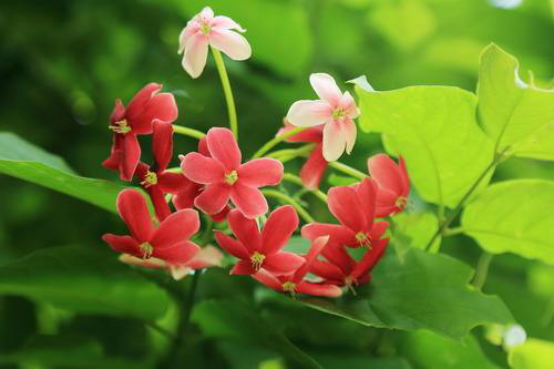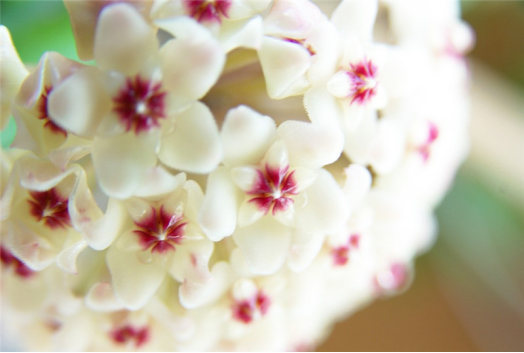Propagation method of Cymbidium paniculata
1. Cuttage propagation
Cymbidium had better be propagated by cuttings in spring and summer, which is warmer in spring and autumn and suitable for plant growth. Cut the pruned branches so that you can cultivate a luxuriant thousand-leaf orchid. However, in the process of cutting, we must pay attention to the cutting time and try to avoid the hot summer and cold winter. Give plants plenty of sunlight and water after cutting. it is easy to take root and sprout and reproduce in large numbers.

2. Ramet propagation
The method of ramet propagation is mainly to divide the mature Cymbidium. When the plant of Cymbidium has been very luxuriant, it can begin to propagate separately. The main step of branch propagation is to dig out the leafy Cymbidium from the soil, rinse the roots with water, and then put them in a wet place to wait for the roots to soften, so that the leaves can be divided into multiple parts with scissors, so that they can be cultivated separately into new plants.
Have you learned the breeding method of Chiba? Here the editor would like to remind you of some matters needing attention in the process of breeding!
The Culture method of Cymbidium the function of Cymbidium
Qianye Cymbidium originated in New Zealand, strong habits, like a warm and humid environment, can grow normally in sufficient sunshine and half-shade, because it can beautify the home and purify the air, it is loved by people at present, and it is a common green plant in the home at present. of course, the breeding of Chiba in the middle of the home should also pay attention to the method, what are the breeding methods in the end? What are the functions of Chiba? Let's go with the editor to get to know it.
The culture methods of Chiba are as follows:
When it comes to the breeding method of Cymbidium, generally any plant needs light, temperature, moisture and so on. Of course, household plants also need to pay attention to pruning in the process of breeding. Let's take a look at the following introduction:
1. Light and temperature:
Chiba likes the semi-shady environment and needs plenty of sunlight in the process of growth, but it should be noted that the light is too strong or insufficient, the leaves are easy to fade and turn yellow, and when the sun is strong in summer, you should pay attention to shade so as not to burn the plants. in winter, we should question how to keep the light of the worms, so as not to lose the light of the leaves.
Cymbidium likes warm and humid climate and is not resistant to cold. The suitable growth temperature is 20 to 24 ℃. If the temperature is too high, the leaves are easy to turn yellow and dry. Pay attention to cooling and ventilation in summer, low temperature in winter, to maintain a certain overwintering temperature, not lower than 5 ℃.
2. Water and fertilizer management:
Cymbidium can grow vigorously in spring and autumn, so watering should be sufficient, basin soil should always be moist, but not stagnant water, high temperature in summer should be often sprayed to increase humidity, and water should be gradually reduced in autumn. Chlorophyllum can apply thin liquid fertilizer once a month in the growing season, and should stop topdressing in winter.
3. Trim and change the basin:
The growth rate of Cymbidium is very fast, and with the passage of time, the plant will soon grow vigorously. In order to maintain a good plant shape, it is necessary to often reshape, cut off the branches that affect the plant shape, keep the plant shape beautiful, and pruning can sprout many new branches to make the plant shape fuller.
Because of its fast growth and easy to grow all over the basin, Chiba should change the basin every two years. The best time to change the basin is in spring, and the sandy soil with rich humus, loose and fertile soil and good drainage and permeability should be used.
4. Pest control:
The common diseases of Cymbidium are shell insect damage and root rot.
5. The propagation method of Cymbidium:
The reproduction of Cymbidium can be combined with changing pots for split, generally a plant can be divided into two to several clusters, can also be cut off branches for cutting, can also be used for propagation of small plants on the stem; Cymbidium can also be sown with seeds, but generally less used.
Such as the above is a brief introduction to the breeding methods of Cymbidium, I believe that through the above introduction, we will have a further understanding and understanding of the cultivation of this plant, of course, like other indoor plants, it also has a certain role, what is the role of Cymbidium in the end? Let's take a look at the following introduction:
The function of Chiba:
1. Chiba Cymbidium can be viewed:
Cymbidium is a beautiful ornamental plant, the leaves are very small, heart-shaped or round leaves, very lovely, you can watch the leaves, the plant type is also very beautiful, you can observe the shape. Its plants are clustered and can grow many slender stems, which are long and thin, with a sense of hair. As a result of creeping growth, these stems can be said to grow wantonly and have their own shape. If it is a dangling growth, it is more suitable to be used as a hanging basin, and the hanging basin plants do not have some interest. in addition, when the temperature is high in summer or other seasons, the flowers are concentrated at the end of the hanging branches. the stamens are yellow, and the inner tender leaves are sometimes purple, which is also a good place to watch.
2. Cymbidium can be used as a potted plant:
The plant shape is full, the branches and leaves are whirling, and it has high ornamental value. The plant type is creeping and the plant type is small. It is suitable to be used as a small potted plant, placed indoors, looking at the small potted plant, which can add a little green to the room and make it no longer monotonous. Cymbidium can also be planted in hanging pots, because when its stem grows too long, it may overhang and grow. It is very appropriate to make a hanging basket, hang it up, or put it on the top of several shelves or cabinets, the stems and leaves naturally droop, covering the whole flowerpot, like a green ball, very good-looking.
3. Chiba can be purified:
Many plants have the function of purification, and the same is true of Cymbidium, which can carry out photosynthesis in weak light, release oxygen, and can absorb more than 80% of the indoor harmful gases, and has a strong ability to absorb formaldehyde. Cymbidium plays an important role in indoor air purification.
How to cut Cymbidium, the method and steps of cuttage
Cymbidium can be propagated by cutting, and it is planted all the year round, except in winter, it can be cut in other seasons, so how to cuttage, the following is to sort out the cutting methods and steps.
How to cut Cymbidium lanceolata 1. Cutting time
For the cutting time of Euphorbia angustifolia, it is suggested that flower friends should choose to cut in spring, summer and autumn, but not in winter, because the winter temperature is too low and it is easy to be frostbitten, especially in the north. Cutting in winter is not recommended.
2. Selection of cuttings
The cuttings of Cymbidium chinense require that the branches are full and healthy, and the length is about 5-10cm. When cutting cuttings, you should choose shoots, preferably branches with top buds, and then remove part of the leaves at the lower end of the state, and keep fewer leaves on the cuttings.
Soil selection for changing basin
Flower friends can choose a round flowerpot with a diameter of about 7.5cm for cutting, and the soil for cutting is generally a breathable mixed soil.
3. Cutting method
After the cuttings of the thousand-leaf orchid are treated, the flower friends can carry out cutting. generally, multiple branches can be cut in a flowerpot, and the flower friends insert the treated cuttings directly into the soil. the rest of the branches should be cut from the center to the outside.
Generally in spring and summer cuttage thousand-leaf hanging orchid, can promote the speed of taking root is relatively fast, generally 2 to 3 weeks or so, can take root. However, the growth of the thousand-leaf orchid is relatively slow, so choose a small flowerpot when cutting, and it is better to cut a whole flowerpot.
4. Late maintenance
In general, when the cuttings of Cymbidium begin to grow, flower friends can apply some fertilizer to promote growth.
- Prev

Breeding method of quisqualis
The propagation methods of Quisqualia are seed propagation, sub-stump propagation and layering propagation. 1, seed reproduction select mature and full fruit as seed (Kang Guo Quizizi can not be used as seed), in the lunar calendar 2~3 months spring sowing or 8~9 months autumn sowing, autumn sowing is better. Break the tip of the seed shell before sowing
- Next

The culture method of ball orchid:
1. Choosing a suitable growth environment can neither be exposed to sunlight nor lack of light, and the most suitable range is between 10 ℃ and 38 ℃, with a shelf for climbing and growing. two。 The breeding pot should be selected with a small flowerpot so that the ball orchid can fill the flowerpot with its roots as soon as possible. 3. The scale of watering ball orchid itself is succulent and watery
Related
- Fuxing push coffee new agricultural production and marketing class: lack of small-scale processing plants
- Jujube rice field leisure farm deep ploughing Yilan for five years to create a space for organic food and play
- Nongyu Farm-A trial of organic papaya for brave women with advanced technology
- Four points for attention in the prevention and control of diseases and insect pests of edible fungi
- How to add nutrient solution to Edible Fungi
- Is there any good way to control edible fungus mites?
- Open Inoculation Technology of Edible Fungi
- Is there any clever way to use fertilizer for edible fungus in winter?
- What agents are used to kill the pathogens of edible fungi in the mushroom shed?
- Rapid drying of Edible Fungi

